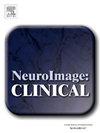Altered functional connectivity of brainstem ARAS nuclei unveils the mechanisms of disorders of consciousness in sTBI: an exploratory study
IF 3.6
2区 医学
Q2 NEUROIMAGING
引用次数: 0
Abstract
Objective
To investigate the functional connectivity (FC) characteristics of Ascending Reticular Activating System (ARAS) in patients with disorders of consciousness (DOC) following severe traumatic brain injury (sTBI), while introducing the Linear support vector machine (LSVM) to predict the recovery of consciousness.
Methods
Resting-state MRI was used to measure FC changes between the brainstem ARAS nuclei and whole-brain voxels. We compared the differences in FC between sTBI patients and healthy controls, as well as between the wake and DOC groups. Furthermore, the LSVM model for consciousness recovery was developed based on the Z-values of regions of interest (ROIs) and/or scale to distinguish the prognosis of sTBI patients.
Results
A total of 28 sTBI patients with DOC and 30 healthy controls were included, with no significant baseline differences (p > 0.05). Using the brainstem ARAS nuclei as the ROI, we observed increased FC in the subcortical regions compared to healthy controls. The strength of FC was significantly different between patients who recovered consciousness and those who did not at 6 months post-sTBI (AlphaSim corrected, p < 0.05, Cluster > 154). Furthermore, the LSVM model demonstrated strong predictive performance, with an area under the receiver operating characteristic curve of 0.81–0.98.
Conclusions
Our study suggest that the disruption FC of ARAS from the subcortex to the cortex may be associated with DOC and prognosis in sTBI patients. Furthermore, the LSVM model shows potential value in distinguishing the recovery of consciousness.

脑干ARAS核功能连通性的改变揭示了sTBI中意识障碍的机制:一项探索性研究
目的探讨重度颅脑损伤(sTBI)后意识障碍(DOC)患者上升网状激活系统(ARAS)的功能连通性(FC)特征,并引入线性支持向量机(LSVM)预测意识恢复。方法静息状态MRI测量脑干ARAS核与全脑体素间FC变化。我们比较了sTBI患者和健康对照组之间以及wake组和DOC组之间FC的差异。此外,基于感兴趣区域(roi)和/或量表的z值,建立了意识恢复的LSVM模型,以区分sTBI患者的预后。结果共纳入28例伴有DOC的sTBI患者和30例健康对照,两组间基线差异无统计学意义(p >;0.05)。使用脑干ARAS核作为ROI,我们观察到与健康对照相比,皮质下区域的FC增加。在stbi后6个月,意识恢复的患者与未恢复意识的患者之间的FC强度有显著差异(AlphaSim校正,p <;0.05,聚类>;154)。此外,LSVM模型显示出较强的预测性能,在接受者工作特征曲线下的面积为0.81-0.98。结论我们的研究提示sTBI患者从皮层下到皮层的ARAS的FC中断可能与DOC和预后有关。此外,LSVM模型在区分意识恢复方面显示出潜在的价值。
本文章由计算机程序翻译,如有差异,请以英文原文为准。
求助全文
约1分钟内获得全文
求助全文
来源期刊

Neuroimage-Clinical
NEUROIMAGING-
CiteScore
7.50
自引率
4.80%
发文量
368
审稿时长
52 days
期刊介绍:
NeuroImage: Clinical, a journal of diseases, disorders and syndromes involving the Nervous System, provides a vehicle for communicating important advances in the study of abnormal structure-function relationships of the human nervous system based on imaging.
The focus of NeuroImage: Clinical is on defining changes to the brain associated with primary neurologic and psychiatric diseases and disorders of the nervous system as well as behavioral syndromes and developmental conditions. The main criterion for judging papers is the extent of scientific advancement in the understanding of the pathophysiologic mechanisms of diseases and disorders, in identification of functional models that link clinical signs and symptoms with brain function and in the creation of image based tools applicable to a broad range of clinical needs including diagnosis, monitoring and tracking of illness, predicting therapeutic response and development of new treatments. Papers dealing with structure and function in animal models will also be considered if they reveal mechanisms that can be readily translated to human conditions.
 求助内容:
求助内容: 应助结果提醒方式:
应助结果提醒方式:


